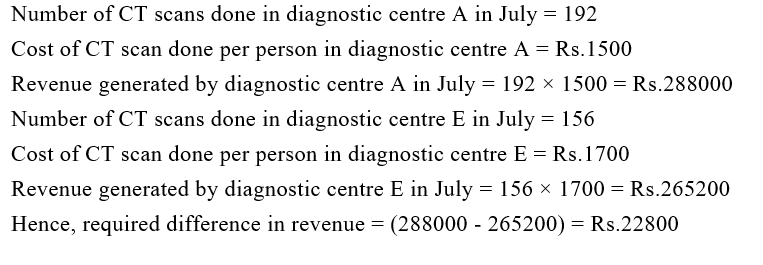Question 1: 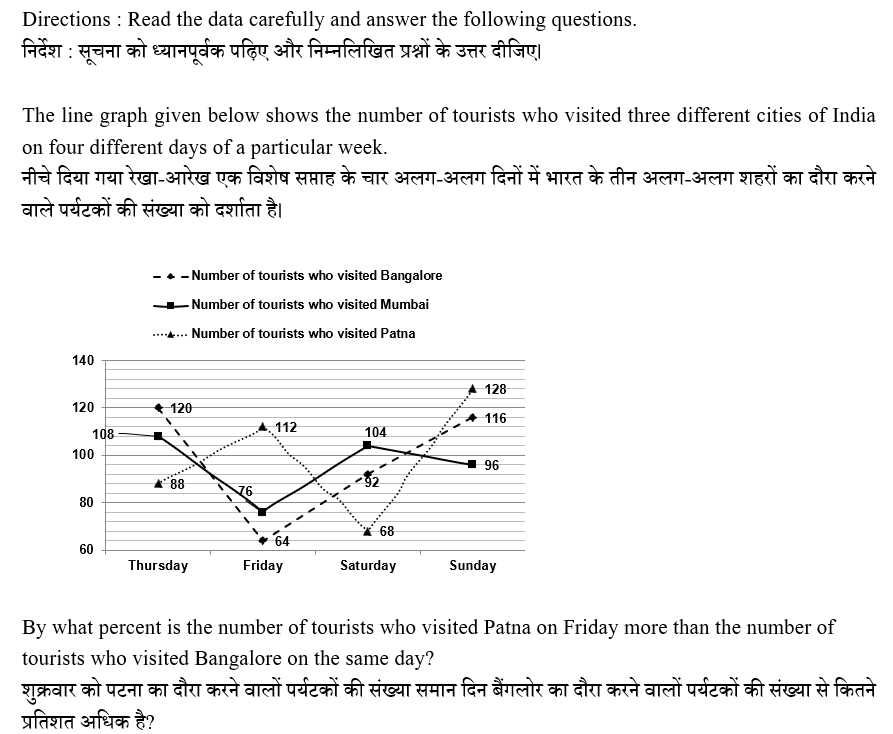
50%
None of these / इनमें से कोई नहीं
75%
60%
80%
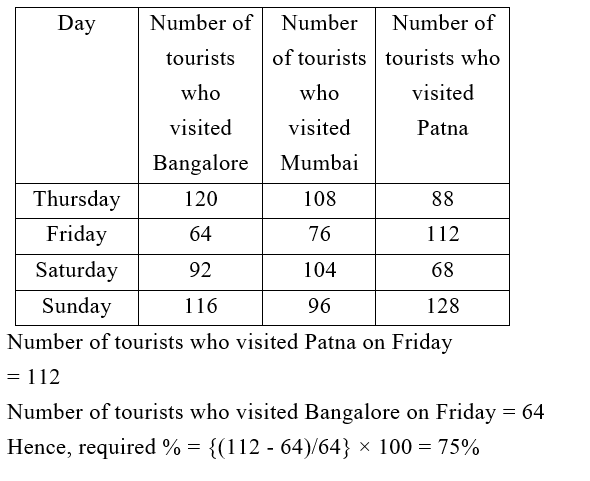
Question 2: 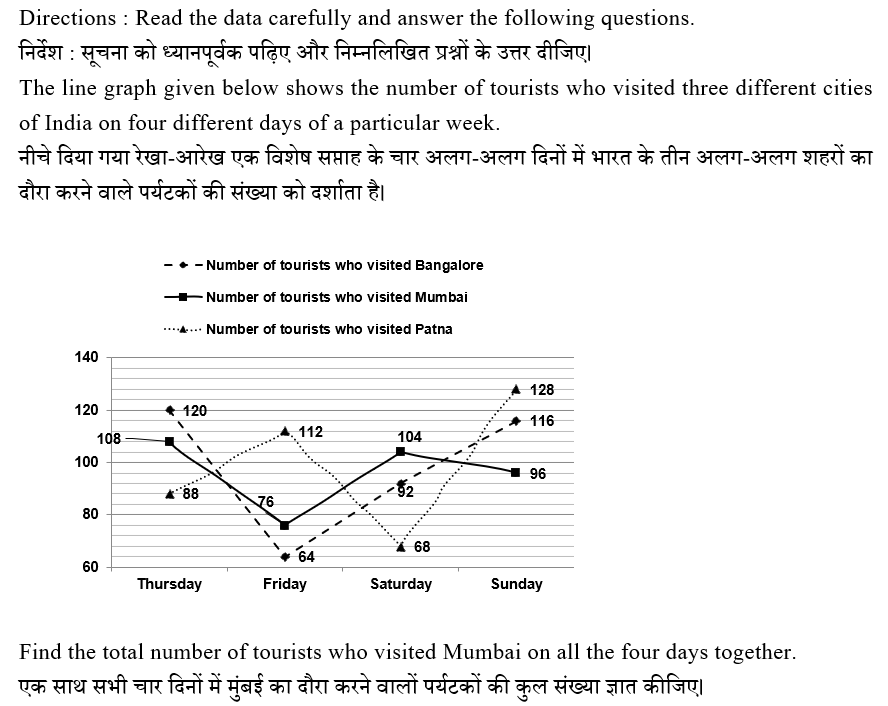
374
394
384
294
284
Required total = (108 + 76 + 104 + 96) = 384
Question 3: 
131
111
121
126
116

Question 4: 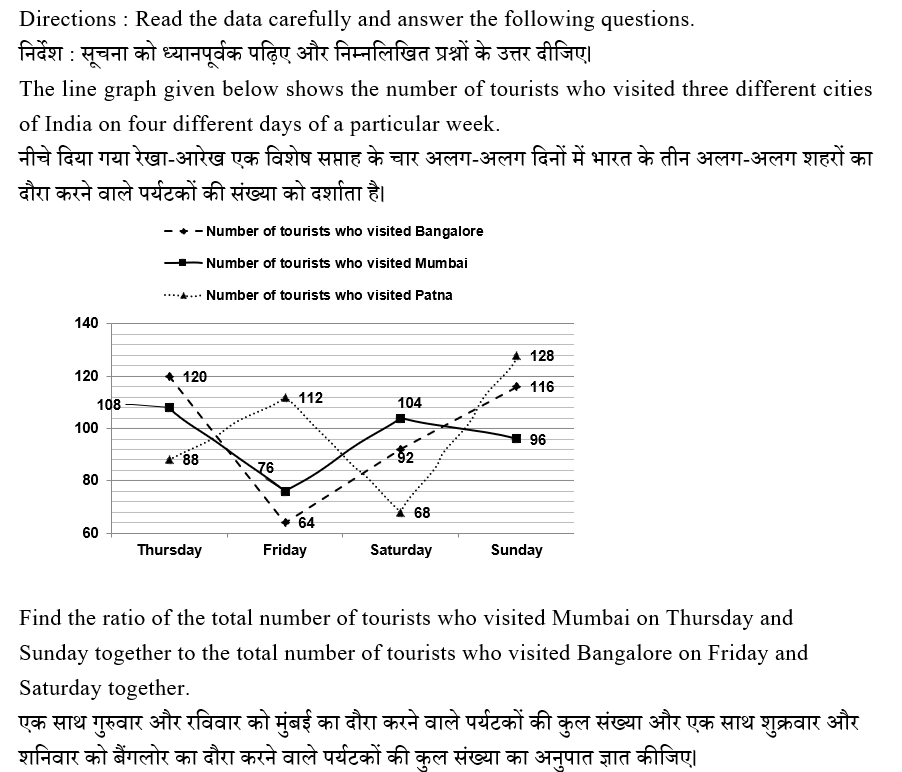
12:13
7:3
None of these / इनमें से कोई नहीं
13:17
11:17
Total number of tourists who visited Mumbai on Thursday and Sunday together = (108 + 96) = 204
Total number of tourists who visited Bangalore on Friday and Saturday together = (64 + 92) = 156
Hence, required ratio = 204:156 = 17:13
Question 5: 
135
95
114
102
85
Number of tourists who visited Mumbai on Friday = 76
Ratio of the number of tourists who visited Mumbai on Friday to the number of tourists who visited Chandigarh on the same day = 4:5
Hence, number of tourists who visited Chandigarh on Friday = (5/4) × 76 = 95
Question 6: 
196
216
186
192
202

Question 7: 

24
14
34
28
18
Total number of CT scans done by diagnostic centres B and C together = 216 + 300 = 516
Total number of CT scans done by diagnostic centres D and E together = 336 + 156 = 492
Hence, required difference = (516 – 492) = 24
Question 8: 

415
390
None of these / इनमें से कोई नहीं
410
395

Question 9: 

108°
100.8°
93.6°
64.8°
90°
Percentage of CT scans done by diagnostic centre D out of the total scans = 28%
Hence, required central angle = 28 × (18/5)
= 100.8°
Question 10: 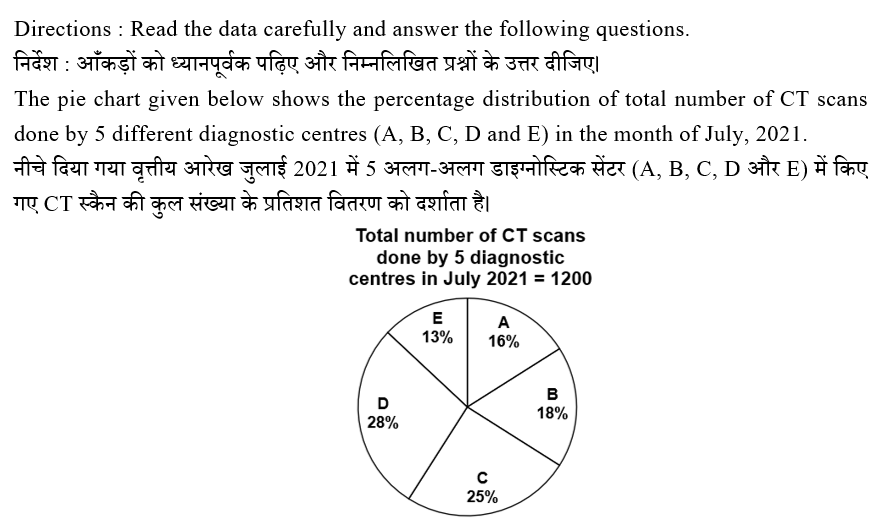

Rs.20800
None of these / इनमें से कोई नहीं
Rs.20200
Rs.22800
Rs.28200
